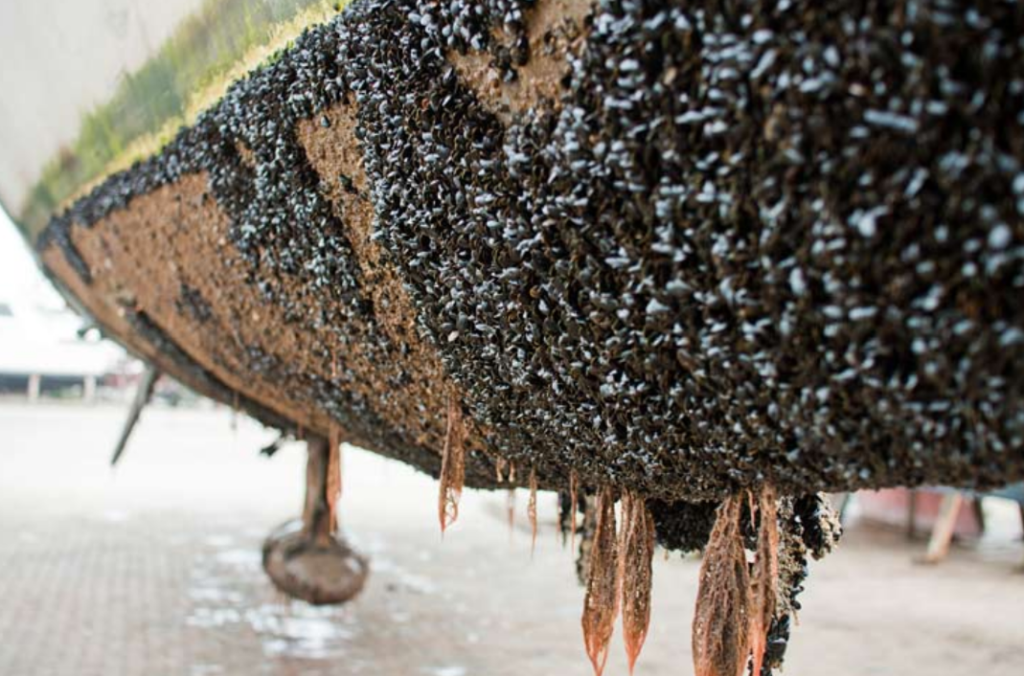> Industry & Business
Copper as antifouling agent
Biofouling is the accumulation of microorganisms, plants, algae, or small animals on wetted surfaces that have a mechanical function, causing structural or other functional deficiencies. Biofouling can also be a significant vector for the transfer of invasive aquatic species. Antifouling paints are used extensively within the commercial shipping and recreational boating sectors to reduce drag and thus retain speed : fuel consumption can be increased by 10 to 40% due to biofouling on underwater surfaces of boats and ships’ hulls.
In the early days of sailing ships, lime and later arsenic were used to coat ships’ hulls, until the modern chemicals industry developed effective anti-fouling paints using metallic compounds. These compounds slowly “leach” into the sea water, killing barnacles and other marine life that have attached to the ship. One of the most effective anti-fouling paints, developed in the 1960s, contained the organotin tributylin (TBT), but it was prohibited in 2008 due to its toxic effects on ecosystems.
A number of general technological classes of antifouling paint have been developed that have different cost vs. performance attributes. These main general classes include insoluble matrix (traditional) paints, soluble matrix (ablative) paints, hybrid systems, and selfpolishing copolymers paints (SPCs). A number of different biocides are commonly used but, in order to achieve broad spectrum control of fouling organisms, most commercial antifouling paints contain a copper compound such as cuprous oxide for a slow release of copper ions. Copper is generally accompanied by one or more organic or organometallic co-biocides, like zinc which is added to many formulations as a pigment and/or to control polishing rates.


